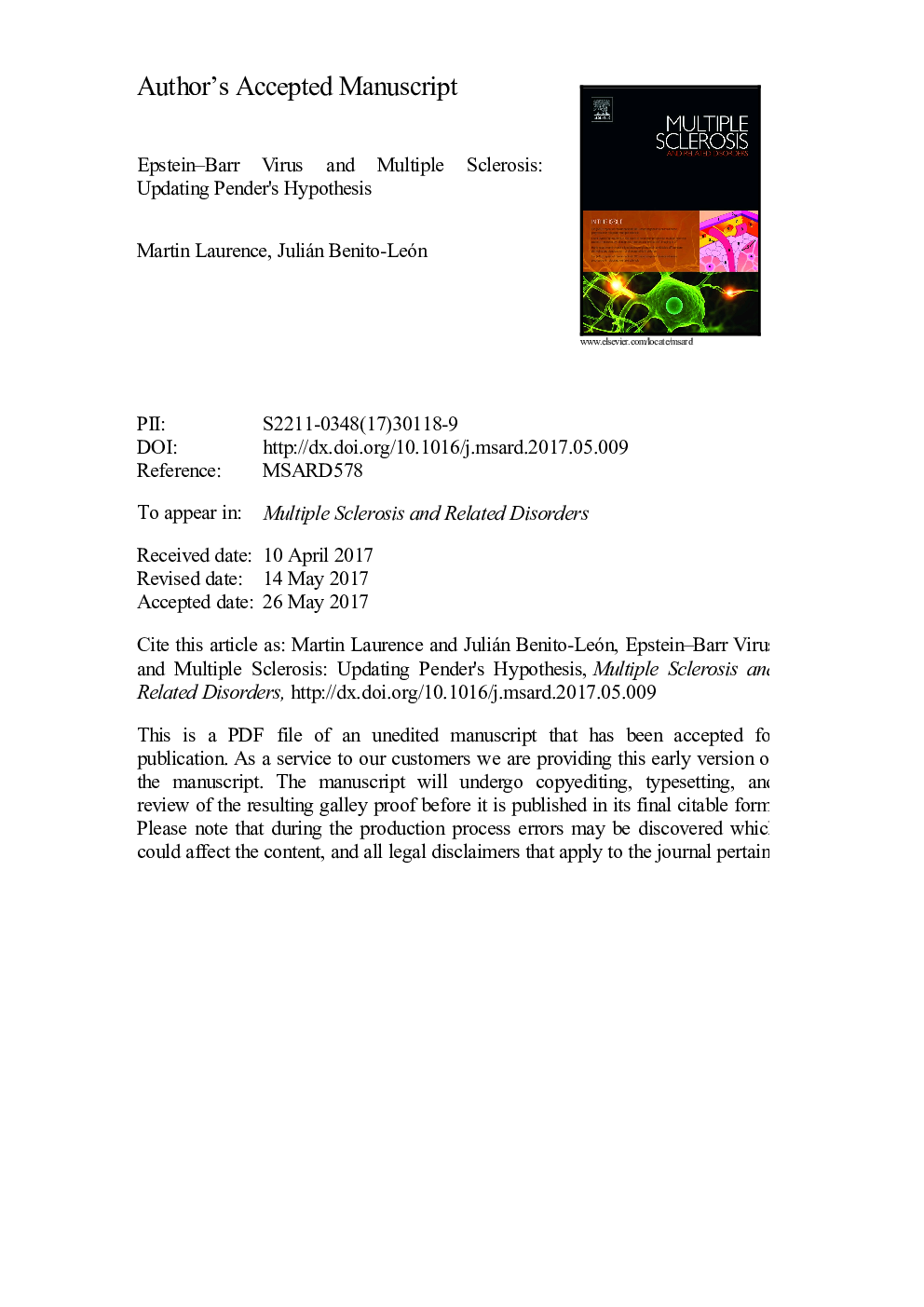| کد مقاله | کد نشریه | سال انتشار | مقاله انگلیسی | نسخه تمام متن |
|---|---|---|---|---|
| 5590885 | 1570201 | 2017 | 32 صفحه PDF | دانلود رایگان |
عنوان انگلیسی مقاله ISI
Epstein-Barr virus and multiple sclerosis: Updating Pender's hypothesis
ترجمه فارسی عنوان
ویروس اپشتین بار و مولتیپل اسکلروزیس: به روز رسانی فرضیه پندر
دانلود مقاله + سفارش ترجمه
دانلود مقاله ISI انگلیسی
رایگان برای ایرانیان
کلمات کلیدی
موضوعات مرتبط
علوم زیستی و بیوفناوری
بیوشیمی، ژنتیک و زیست شناسی مولکولی
ژنتیک
چکیده انگلیسی
Substantial epidemiological evidence supports the involvement of the Epstein-Barr virus (EBV) in multiple sclerosis (MS). Mechanisms through which EBV may increase MS risk are reviewed here. Most individuals contract EBV in early childhood yet only develop MS in early adulthood, by which time EBV has been latent for decades. When latent, EBV is confined to a minute subset of memory B cells: about 1000 cells in peripheral blood and 500,000 cells in the lymphoid system, mainly in the mouth. Reactivation of EBV in the central nervous system (CNS) has been proposed as a cause of MS. Alternatively, EBV may enable the recognition of “forbidden” antigens by memory B cells through its presence in this leukocyte type, as first proposed by Pender. Though the requirement for B cells in MS supports both hypotheses, EBV has not been consistently found in MS lesions, as would be expected. EBV episome replication during B cell division is now known to be inefficient, resulting in some descendant B cells becoming EBV-free after a few dozen divisions. EBV-free memory B cells in the CNS may thus have descended from a memory B cell which matured while containing EBV episomes, enabling its B cell receptor to recognize “forbidden” MS-causing antigens in the CNS, even if EBV is absent from this site.
ناشر
Database: Elsevier - ScienceDirect (ساینس دایرکت)
Journal: Multiple Sclerosis and Related Disorders - Volume 16, August 2017, Pages 8-14
Journal: Multiple Sclerosis and Related Disorders - Volume 16, August 2017, Pages 8-14
نویسندگان
Martin Laurence, Julián Benito-León,
